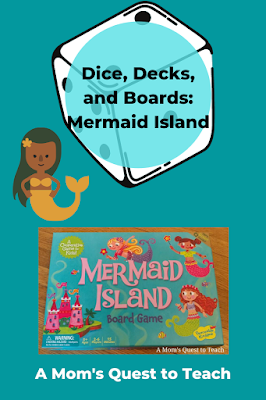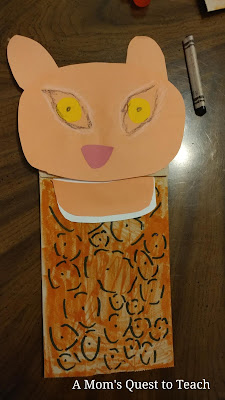Disclaimer: I received a FREE copy of this product
through the HOMESCHOOL REVIEW CREW in exchange for my honest review. I was not
required to write a positive review nor was I compensated in any other way.
Over the past several weeks our family has been using
The LIFE Plan by Allen L. Elder from The LIFE Network to study the Bible. Our younger children, my husband, and I started with Volume 1: The Bible's Story: Genesis 1-11 while our teen started reading Volume 3: The Structure of the Entire Bible. I spent some time reading through Volume 4: The Life of Jesus on Earth by myself in the evenings.
The mission of
The LIFE Network is to produce, publish, present, and provide Christian learning resources. They help to establish and support the growth of churches both locally and globally as well as provide spiritual training and physical resources for pastors and churches. The LIFE Plan is one of those resources. It will take the reader from the beginning with God to helping fulfill God's purpose in one's life.
What Books Did We Receive?
There are six volumes in The LIFE Plan which contain 216 lessons. "The LIFE Plan is a discipleship curriculum which takes you from a beginning with God into a life lived according to his purpose and for his glory" (ix). LIFE stands for Living Intentionally For Eternity. The goal of the books is for followers of Jesus to live a life according to His purpose and glory.
- The LIFE Plan Volume 1: The Bible's Story: Genesis 1-11
- The LIFE Plan Volume 2: The Bible's Story Genesis 12-Malachi
- The LIFE Plan Volume 3: The Structure of the Entire Bible
- The LIFE Plan Volume 4: The Life of Jesus on Earth
- The LIFE Plan Volume 5: The Church
- The LIFE Plan Volume 6: Your Personal Ministry
The volumes are paperback books (size 8.5" by 11"). Each lesson is designed in a similar manner. The lesson starts with the theme, lesson aim, and scripture reference. There is then a one- to three-page reading that addressed the topic following by an outline, Scriptures for you and your family to read to broaden your understanding of the topic, theological connections, a lesson glossary with vocabulary, and finally questions to answer. I highly appreciate it when a curriculum is presented in the same manner. It makes it easier to know how to prepare for the next day as well as provides reassurance for children as to what to expect.
How Did We Use The LIFE Plan in our Homeschool?
When the six-volume set arrived, I looked through the volumes to determine which book I wanted to read on my own and which one would be best to hand to our teenage son for him to read independently. I knew I wanted to start with Volume 1 with our younger children. My husband and I sat down and looked through them and decided upon giving Volume 3 to our teenage son.
During the beginning of our studies, I sat with our younger children after dinner and read from Volume 1. They both sat at the dining room table with me and had their Bibles ready to start reading the Scriptures referenced. I would read through the reading selection aloud - stopping frequently to discuss the ideas and topics with our younger homeschooled children. I then used the lesson outline to review the ideas with them - to make sure they understand what I had read aloud. Next, we all took turns reading the Scriptures to Broaden Your Understanding. I loved that this curriculum allowed them the opportunity to practice finding different Scriptures in the Bible. Through our time use The LIFE Plan, they have become more family with the Bible and the order of the books of the Bible. I did skip the Lines of Theological Connection and sometimes the Lesson Glossary with our younger children and some of the questions.
 |
| Reading aloud the Scriptures to Broaden Your Understanding |
One of the things that I love is that our younger children will be able to work through the curriculum twice over the course of their homeschooling studies. This will hopefully bring them into a much closer relationship with God and a better understanding of the Bible.
 |
| On some nights, our daughter sat across the table from me with her Bible. |
Volume 1: The Bible's Story: Genesis 1-11 is taking us through the seven days of creation as well as reintroducing us "to the one true and living God," presenting the idea of the holy trinity, discusses sin, temptation, and other important events in the first 11 books of the Bible. As our children are young, things a bit more slowly (originally we were doing one lesson a day). But by the end of this week, we will have finished reading about the creation and start learning more about how man and woman bear the image of God.
During the evenings, I took the time to read through Volume 4: The Life of Jesus on Earth. I sometimes read several lessons each evening and skipped reading the Scriptures to Broaden your Understanding and questions, as I was more interested in reading what the author, Allen L. Elder wanted to convey to his readers. I will probably go back and use the books with all the lesson features at a future time to have a more in-depth Bible study.
Volume 4: The Life of Jesus on Earth starts with the Messianic Prophecies and quickly moves on through Jesus' birth and childhood (touching upon the fact that while we don't know a lot about Jesus' childhood, we can see that he had a great understanding of the things of God). The next several lessons discuss the plan of Jesus and disciple-making. Elder describes the steps that Jesus presented to make disciples - which we are meant to do as Christians. One of the lessons even has a matching section to help you remember the step-by-step method for making disciples.

During the writing of this review, I am in the middle of the lessons demonstrating how Jesus was a healer in Volume 4: The Life of Jesus on Earth. I am reminded that Jesus healed in various ways, as presented in the text and outline: by speaking, commanding the sick to do something, and by touch. The healing of individuals revealed to his followers and to us that Jesus is sovereign and a deity. Everything that Jesus did was for a reason to reveal who he was.
I really like how the books are written and I can see them being very useful in our future homeschooling years. While I think it might be helpful to read the books in order, since I am reading Volumes 1 and 4 I haven't really felt any confusion. So if you are more interested in one volume over another, you probably can make the decision to purchase or read that one first. And so far I haven't seen any problems with our children using different translations of the Bible to read the Scripture mentioned in the books. And finally, I love the amount of space in the books for notetaking.
Each book could be used over the course of one homeschool year. So if you purchase the entire six-volume set you have six years worth of elementary level curriculum (grades 1-6). You could then have your homeschooling students complete the work again in grades 7-12 so they will have worked through each book twice during the homeschooling years.
An Overview of What is to Come
As we have not spent time with volumes 2, 5, and 6 yet, I would like to provide a brief overview of the information presented in those books. Each book is similar in length ranging from 183 to 201 pages – printed in the United States. Just like with the other volumes, they are presented in the same manner with text to read, an outline, scripture references, and questions.
Volume 2: Abraham and Israel focuses upon God calling Abraham, the lives of Isaac, Jacob, and Moses. Readers then follow the story of the Bible through reading about the different leaders of Israel like King Saul, King David, and King Solomon. In general, Volume 2 presents a brief overview of the history of Israel and then closes with looking at the prophets in the Old Testament.
If you want to study the church from a biblical perspective then start with Volume 5: The Church. Over the course of 36 lessons (which you can complete over 36 weeks/one homeschool year), you will learn about the early days of the church, how the church spread, broke, was reformed, and continues to this day. There are also chapters on non-Christian religions, cults, and the occult. The author recommends that Christians should be grounded in the Word of God to help them in dealing with other religions.
The final volume, Your Part in the Story, helps you bring everything together so that you can make disciples. The final year (which will be 6 grade and 12 grade if you follow the suggested plan) is "focused on what you will do with your training for the rest of your life" (1). The reading text for the lessons is a little bit longer than some of the ones we are currently reading and the questions ask readers to delve even deeper into their beliefs. Some questions include: "Are you growing in Christ as a child of God?" and "Have you believed on Jesus for salvation?"
 |
| Easy-to-read font |
I think
The LIFE Plan would be a welcome addition to a homeschool family, a church ministry, or someone going on a mission trip. The information is presented in a clear and concise manner and provides plenty of opportunities to get back into the Bible and read the word of God. The questions also provide the perfect starting point for discussing our beliefs with others. And if you are stumped on an answer, check the back of the book for the answer key.
Do You Want to Learn More?
There were several other members of the Homeschool Review Crew who had the chance to use The LIFE Plan in their homeschool. Please be sure to read their
reviews, too.



















































